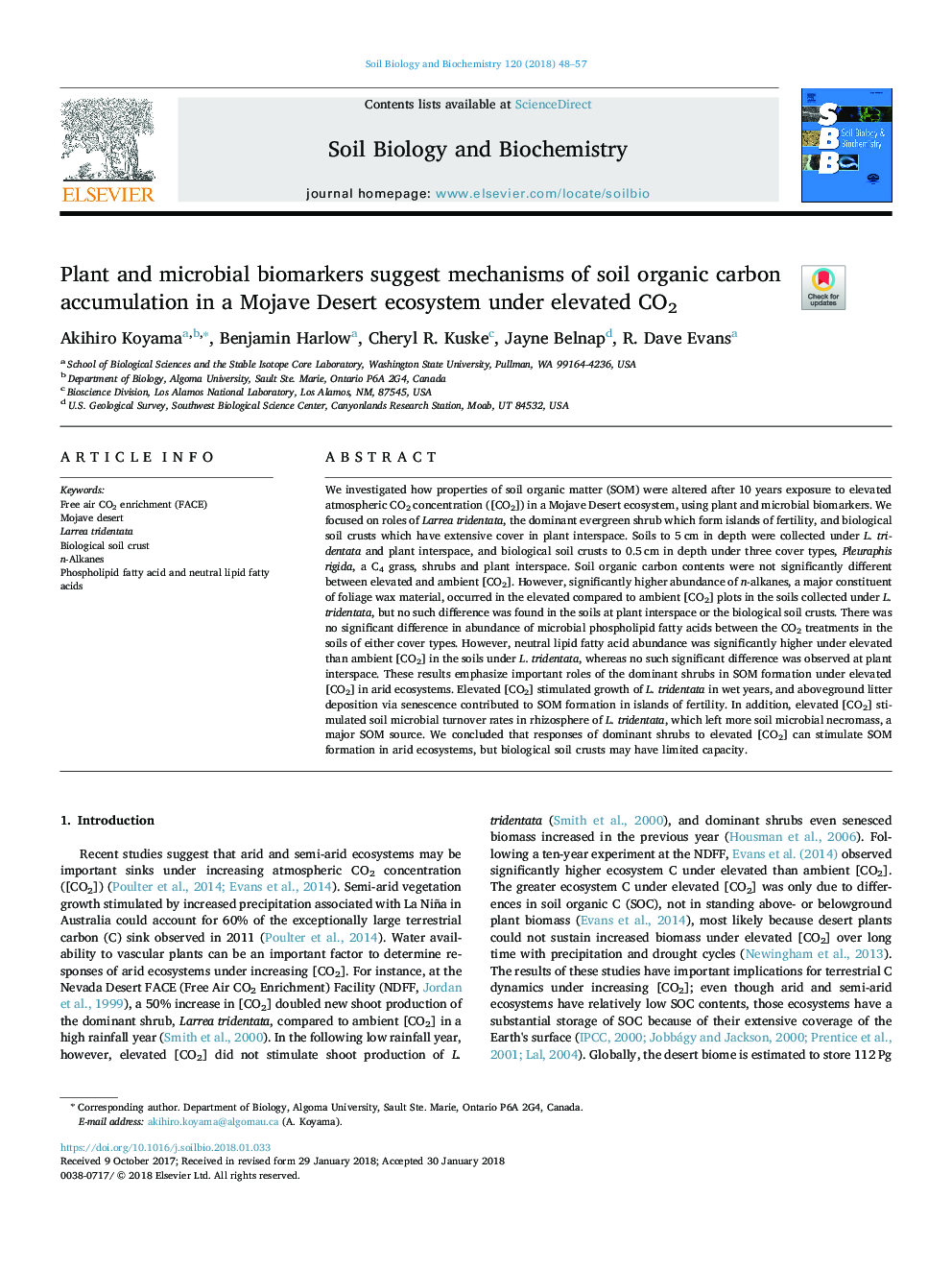| Article ID | Journal | Published Year | Pages | File Type |
|---|---|---|---|---|
| 8362778 | Soil Biology and Biochemistry | 2018 | 10 Pages |
Abstract
We investigated how properties of soil organic matter (SOM) were altered after 10 years exposure to elevated atmospheric CO2 concentration ([CO2]) in a Mojave Desert ecosystem, using plant and microbial biomarkers. We focused on roles of Larrea tridentata, the dominant evergreen shrub which form islands of fertility, and biological soil crusts which have extensive cover in plant interspace. Soils to 5â¯cm in depth were collected under L. tridentata and plant interspace, and biological soil crusts to 0.5â¯cm in depth under three cover types, Pleuraphis rigida, a C4 grass, shrubs and plant interspace. Soil organic carbon contents were not significantly different between elevated and ambient [CO2]. However, significantly higher abundance of n-alkanes, a major constituent of foliage wax material, occurred in the elevated compared to ambient [CO2] plots in the soils collected under L. tridentata, but no such difference was found in the soils at plant interspace or the biological soil crusts. There was no significant difference in abundance of microbial phospholipid fatty acids between the CO2 treatments in the soils of either cover types. However, neutral lipid fatty acid abundance was significantly higher under elevated than ambient [CO2] in the soils under L. tridentata, whereas no such significant difference was observed at plant interspace. These results emphasize important roles of the dominant shrubs in SOM formation under elevated [CO2] in arid ecosystems. Elevated [CO2] stimulated growth of L. tridentata in wet years, and aboveground litter deposition via senescence contributed to SOM formation in islands of fertility. In addition, elevated [CO2] stimulated soil microbial turnover rates in rhizosphere of L. tridentata, which left more soil microbial necromass, a major SOM source. We concluded that responses of dominant shrubs to elevated [CO2] can stimulate SOM formation in arid ecosystems, but biological soil crusts may have limited capacity.
Related Topics
Life Sciences
Agricultural and Biological Sciences
Soil Science
Authors
Akihiro Koyama, Benjamin Harlow, Cheryl R. Kuske, Jayne Belnap, R. Dave Evans,
